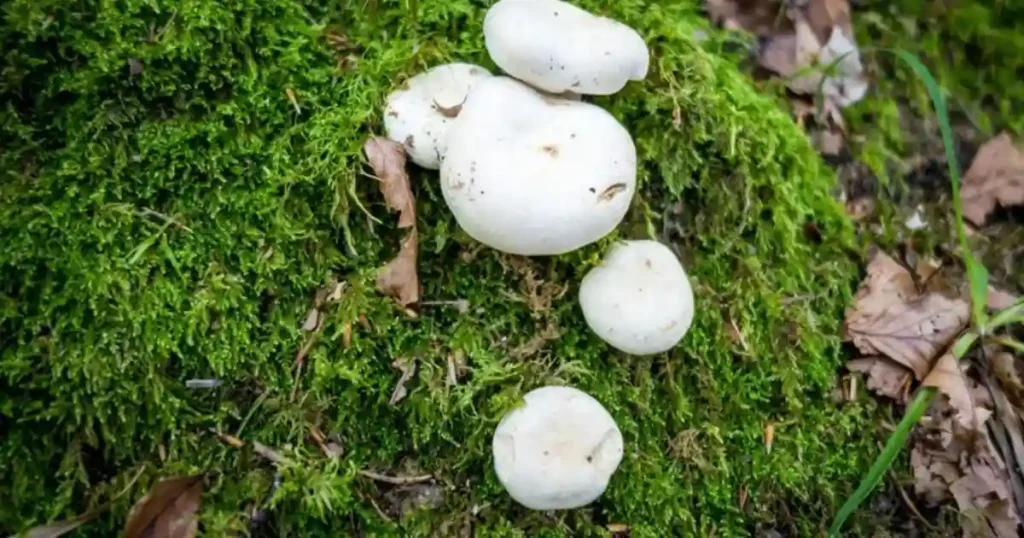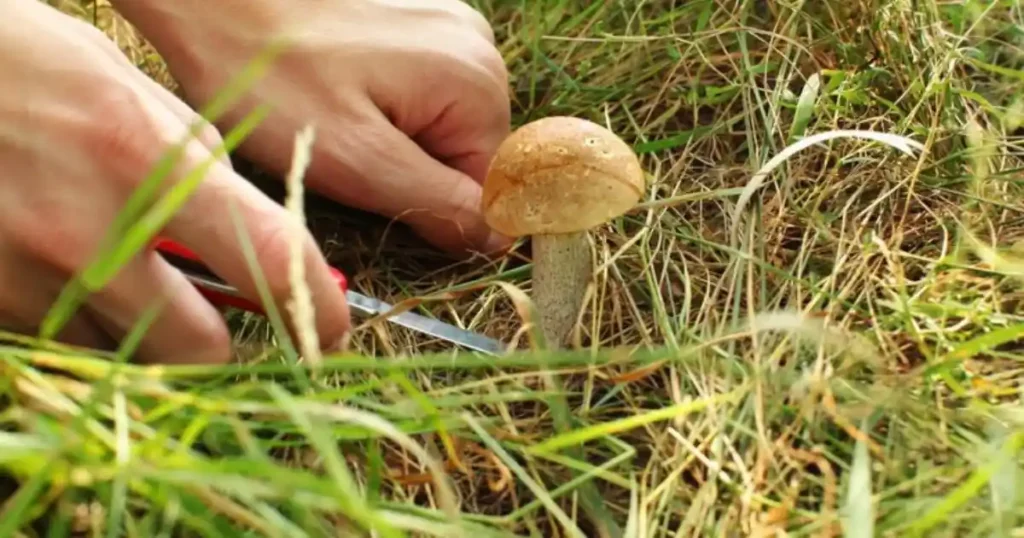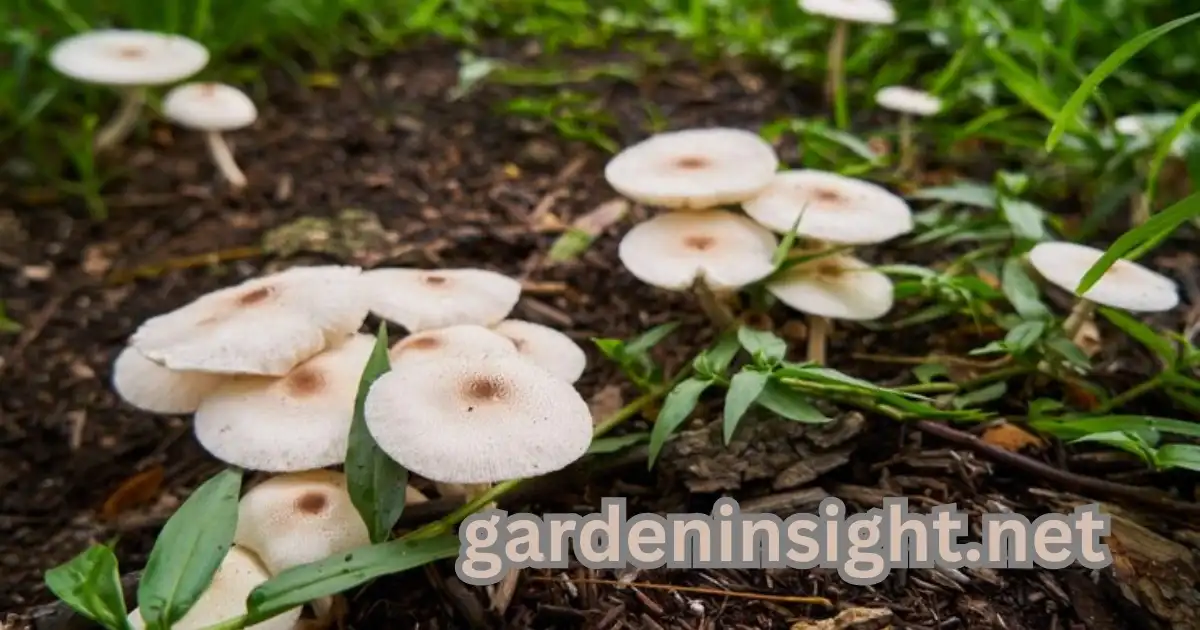Mushrooms popping up in your garden can be a curious sight. While some might find them fascinating, others may worry about their implications.
While these fungi may seem like a nuisance, their growth reveals important details about the health of your soil and the environment.
This comprehensive guide will explore the reasons behind your query why your garden have mushrooms, their potential effects, and how to manage them.
What Causes Mushrooms to Grow in Gardens?

Mushrooms are the fruiting bodies of fungi, similar to how apples are the fruit of an apple tree. The main body of the fungus, known as mycelium, is a network of thread-like structures that live in the soil or within decaying organic matter like wood, leaves, and grass clippings.
Several factors contribute to mushroom growth:
- Moisture: Mushrooms thrive in damp conditions. Overwatering your garden or periods of heavy rainfall create an ideal environment for them to flourish. This explains why you often see mushrooms appear after rain.
- Organic Matter: A garden rich in organic matter provides a food source for fungi. Decomposing leaves, wood chips, and grass clippings create a perfect breeding ground for the mycelium.
- Shade: Most mushrooms prefer shaded areas, away from direct sunlight.
- Soil Conditions: Slightly acidic soil with a pH between 6.0 and 7.0 is favorable for many mushroom species.
- Temperature: Different mushroom species have different temperature preferences, but many thrive in the mild temperatures of spring and fall.
Are Mushrooms in My Garden Harmful to Plants?
Generally, mushrooms themselves are not harmful to your garden plants. In fact, they can be beneficial. The fungal network (mycelium) helps break down organic matter, improving soil structure and making nutrients more accessible to plants. This decomposition process also contributes to a healthy ecosystem within your garden.
However, some mushrooms indicate underlying issues that could indirectly affect your plants:
- Wood Rot: If mushrooms are growing on trees or wooden structures, it could signify wood rot, a fungal disease that can damage or even kill trees.
- Poor Drainage: An abundance of mushrooms might suggest poor soil drainage, which can lead to root rot and other plant problems.
Do Mushrooms Mean My Soil is Healthy?
The presence of mushrooms often indicates healthy soil rich in organic matter. Fungi play a vital role in decomposition, nutrient cycling, and improving soil structure. They help create a balanced ecosystem that supports plant growth.
However, it’s important to remember that not all mushrooms are a sign of healthy soil. Some species thrive in compacted or waterlogged soil, which can be detrimental to plants.
How Can I Remove Mushrooms from My Garden?

If you’re concerned about the aesthetics of your garden or worry about children or pets coming into contact with potentially poisonous mushrooms, you can remove them. Here are a few methods:
- Hand Picking: Wear gloves and simply pluck the mushrooms from the ground. Dispose of them in a way that prevents their spores from spreading, such as in a sealed bag or by burning (where permitted).
- Mowing: If mushrooms are growing in your lawn, mowing over them will remove the fruiting bodies. However, this won’t eliminate the underlying fungus.
- Raking: Raking your lawn can help remove decaying organic matter that provides food for fungi.
- Improving Drainage: If poor drainage is an issue, aerating your lawn or adding organic matter to improve soil structure can help reduce mushroom growth.
| Method | Description |
|---|---|
| Hand Picking | Remove mushrooms individually while wearing gloves. |
| Mowing | Cut mushrooms down with a lawnmower. |
| Raking | Remove debris and thatch that may be harboring fungal growth. |
| Improve Drainage | Aerate the soil or add organic matter to improve water flow and reduce dampness. |
Why do Mushrooms Grow After Rain in Gardens?
Mushrooms need moisture to grow and reproduce. Rain provides the perfect conditions for the fungal mycelium to produce fruiting bodies (mushrooms). The increased moisture softens the soil, making it easier for the mushrooms to push through. Additionally, rain helps spread the fungal spores, leading to new growth.
Should I Be Worried About Mushrooms in My Yard?
In most cases, mushrooms in your yard are not a cause for concern. They are a natural part of the ecosystem and often indicate healthy soil. However, it’s crucial to be cautious if you have children or pets. Some wild mushrooms are poisonous and can cause severe illness or even death if ingested.
Important: Never eat wild mushrooms unless you are absolutely certain of their identification. If you suspect someone has eaten a poisonous mushroom, seek medical attention immediately.
Are Garden Mushrooms Poisonous to Dogs?
While some wild mushrooms are safe, many common garden varieties are toxic to dogs. Curiosity often leads dogs to sniff, lick, or eat mushrooms, potentially causing serious health issues.
Even a small nibble of a toxic mushroom can cause symptoms ranging from mild stomach upset to life-threatening organ damage.
If you suspect your dog has ingested a mushroom, contact your veterinarian or an animal poison control hotline immediately. Providing a picture or sample of the mushroom can help with identification and treatment.
Are Garden Mushrooms Poisonous to Cats?

Cats are also at risk from poisonous mushrooms, though they’re generally less inclined to eat them than dogs.
The toxins in many mushrooms can cause severe illness in cats, with symptoms like vomiting, diarrhea, weakness, and behavioral changes.
If you see your cat eat a mushroom, or if they show any signs of poisoning, seek veterinary care right away. To protect your cat, supervise them outdoors and promptly remove any mushrooms you find in your garden.
How Can I Prevent Mushrooms from Growing in My Garden?
While completely eliminating mushrooms from your garden might be challenging, you can take steps to reduce their growth:
- Reduce Moisture: Avoid overwatering your garden and ensure proper drainage. Water deeply but infrequently, allowing the soil to dry out between waterings.
- Remove Organic Debris: Regularly rake up leaves, grass clippings, and other organic matter that can serve as a food source for fungi.
- Increase Sunlight: Trim trees and shrubs to allow more sunlight to reach the ground, making the environment less favorable for mushrooms.
- Adjust Soil pH: If your soil is very acidic, you can raise the pH by adding lime. However, it’s important to test your soil first and consult with a gardening expert to ensure you don’t disrupt the balance of your soil.
Conclusion
Mushrooms in your garden are a natural occurrence and often a sign of a healthy ecosystem. While they can be beneficial for your soil, it’s important to be aware of potential concerns, especially regarding children and pets.
By understanding the factors that contribute to mushroom growth and implementing preventive measures, you can manage their presence in your garden effectively.
Remember, appreciating the role of fungi in the natural world can help you coexist with these fascinating organisms.
FAQs
Some of the frequently inquired questions about reasons behind why your garden have mushrooms are as follow:
Why Does My Garden Have Mushrooms Growing in It?
Mushrooms thrive in environments with moisture, organic matter, and shade. If your garden provides these conditions, it’s likely to attract various fungi, resulting in mushroom growth.
Why Does My Lawn Have Mushrooms?
Lawns often provide ideal conditions for mushrooms, especially if they are overwatered, have poor drainage, or contain decaying organic matter like thatch.
Why Does My Yard Have Mushrooms?
Similar to gardens and lawns, yards offer a combination of factors that favor mushroom growth, including moisture, organic matter, and shade.
Are Mushrooms a Bad Sign in Your Garden?
Not necessarily. In many cases, mushrooms indicate healthy soil rich in organic matter. However, some mushrooms can signify underlying problems like wood rot or poor drainage.
